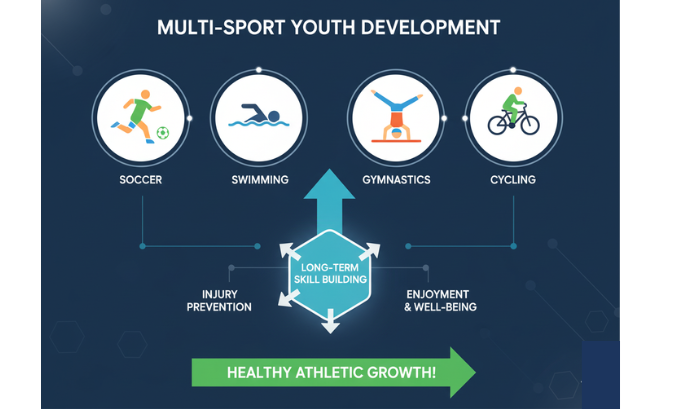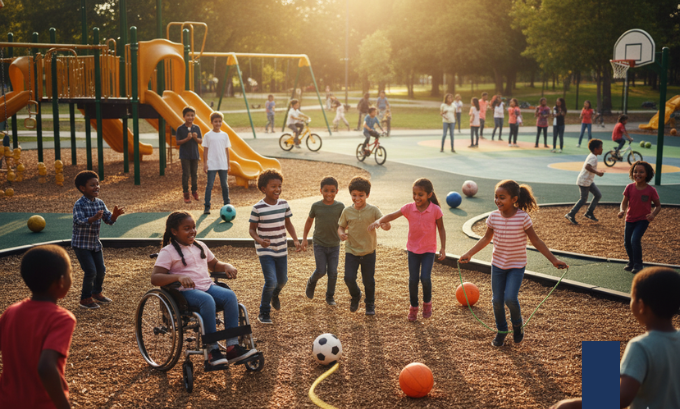Why do so many experts, parents, and teachers now sound the alarm about children’s health and wellness? The answer is simple but important: mounting evidence shows that physical fitness is slipping among young people. More kids and teens are living sedentary lifestyles, leading to real risks for their development and long-term health. When we explain why there is a growing concern over the physical fitness of children and adolescents, the reasons are not one-dimensional—the challenge is woven between technology, changing family patterns, and shifting educational priorities.
In this guide, you’ll learn exactly why this trend has become such a big issue, which factors are most responsible, and how parents, communities, and schools play a role. You’ll get practical comparisons, the latest statistics, and real scenarios, all designed for clarity and authority.
Table of Contents
The Heart of the Matter: Why Everyone Is Suddenly Worried
What’s at the root of this growing concern? Start with numbers: both the World Health Organization (WHO) and the Centers for Disease Control and Prevention (CDC) have published data painting a troubling picture. For example, the WHO estimates that over 80% of adolescents don’t meet daily activity recommendations. These low levels of physical fitness are linked directly to rapid increases in obesity, early development of chronic diseases, and emotional difficulties.
So, when adults explain why there is a growing concern over the physical fitness of children and adolescents, they’re not being alarmist—the figures and risks are clear and present.
How Poor Fitness Impacts Kids: Not Just Waistlines
The major worry isn’t only about kids gaining weight. Yes, obesity has doubled (sometimes tripled) in many countries. But the real danger is bigger:
- Rising Type 2 Diabetes: Diabetes, once largely seen in adults, now appears regularly in children linked to inactivity and poor diet.
- Daily Life Struggles: Lack of exercise can mean poor sleep, reduced attention at school, and lower self-esteem.
- Mental Health Issues: More sedentary youth experience anxiety, sadness, and a sense of isolation.
- Weaker Bones and Resistance: Without enough movement, bones don’t reach their full strength and the immune system might fall short.
- Heart and Vessel Risks: High cholesterol and blood pressure issues are emerging at earlier ages.
These effects underscore why the conversation is about more than “just getting out to play.” Physical health, emotional well-being, and even academic performance intertwine here.
How Technology Is Shaping the Landscape
Technology has changed childhood for better and for worse. On one side, it connects, entertains, and even educates. But too much screen time has quietly replaced physical play.
A CDC survey shows that kids and teens easily log 4-7+ hours in front of screens daily. When devices eat up time, opportunities for physical fitness drop. Video games and endless scrolling offer little in terms of movement. Over time, this digital routine shapes habits and even impacts health outcomes like obesity and sleep disturbance.

Of course, technology isn’t purely negative. Innovative apps and fitness-based games—“exergaming”—can build in some active fun. The key, say experts, is to recognize technology’s double edge and make mindful choices in balancing screens and sports.
Experience: A Family’s Story—Striking the Right Balance
Let’s look at a real-world case. A parent, once a college track athlete, wanted her son (age 7) to focus solely on competitive swimming. She pictured an “early start” as the key to success.
Working as a school coach, I saw this pattern often. Kids with intensive single-sport focus sometimes thrived, but more often, they hit a wall—physically or mentally. I encouraged her to adopt a Long-Term Athlete Development (LTAD) mindset. This approach suggests kids should sample different sports, develop basic movement skills, and keep things lively and fun until at least puberty.
The result in this family? A few years later, her son played soccer, tried gymnastics, and, when ready, chose swimming on his own terms. He was injury-free, enthusiastic, and confident in a variety of settings—much more likely to stick with healthy activity for life.
Strengths of the Varied-Activity Approach
- Flexible Skills: Trying several sports means better overall coordination and reduced injury risk.
- Motivation and Enjoyment: Kids keep play fun—not an obligation—reducing dropout rates.
- Social Learning: New teams and activities expose children to diverse peer groups.
- Long-Term Engagement: Building basics early means greater likelihood of staying active later.
Balanced Critique: What Needs Attention
- Risk of Overcommitment: Too many activities at once can overwhelm a child or family.
- Logistical Challenges: Greater variety means more planning and potential expense.
- Parental Pressure Remains: Even a positive approach can turn negative if adults push too hard.
- Uneven Access: Not all families have equal opportunity for community programs or safe recreation areas.
Systemic Causes: Why the Drop in Physical Fitness?
Here are the main reasons experts explain why there is a growing concern over the physical fitness of children and adolescents.
Shrinking School PE and Its Consequences
Years ago, School Physical Education Programs guaranteed almost every child daily movement. Now, many schools, faced with tight budgets and heavy academic requirements, cut back or let PE go altogether. The CDC minimum recommendation: at least an hour of moderate-to-vigorous physical activity daily. Few receive that much at school, and the message becomes clear—move less, study more.
Parental Influence: Setting the Tone at Home
The habits parents model—good or bad—set the tone for kids. In families that value daily walks, games, or home-cooked healthy meals, children tend to mimic these choices. If evenings center around screens and takeout, young people internalize these behaviors. Parental influence is a crucial lever in shaping habits related to physical fitness and preventing obesity.
The Role of Neighborhoods and Community Programs
Environment matters. In many communities, safe parks, affordable after-school programs, and accessible sports leagues are fewer and farther between. Suburban sprawl, heavy traffic, or a lack of green space can discourage even the most motivated family. Community-based efforts—including subsidized leagues, open playgrounds, and structured activities—can give all children opportunities to move.
Data Table: Comparing Key Influencers on Youth Fitness
| Factor | Current State | Possible Improvement |
|---|---|---|
| School Physical Education | Frequently limited or cut | Reinstate daily, engaging sessions |
| Parental Involvement | Highly variable | Encourage modeling; set routines |
| Technology Use | Screen time is rising | Balance screen/active time |
| Community Access | Uneven availability | Invest in accessible programs |
| Early Sport Specialization | On the rise | Follow LTAD, promote variety |

The Value of Following LTAD (Long-Term Athlete Development)
Unlike early, intense specialization, the LTAD model helps young people discover a broad range of movement skills and only focuses on specific sports as they mature. Research suggests that adopting LTAD not only lowers injury risk but also builds greater lifelong engagement with fitness.
World Health Organization (WHO) and CDC materials highlight that multi-sport youth report more enjoyment, fewer injuries, and better psychological well-being.
Quick Reference: Frequently Asked Questions
1. What is the recommended amount of physical activity for young people?
Both CDC and WHO recommend a minimum of 60 minutes of varied movement (like walking, running, jumping) for all children and adolescents each day.
2. Can technology be a part of a child’s fitness routine?
Absolutely. While excessive screens are a problem, fitness apps and movement-based video games can contribute positively—if balanced with traditional play.
3. What steps can parents take at home?
Set screen time limits, cook healthy meals, walk or bike together, and encourage a range of sports or games.
4. How can schools help reverse the trend?
By reinstating comprehensive School Physical Education Programs, promoting active recess, and forming partnerships with local clubs.
5. Are community programs worth the investment?
Yes! Community programs give equal access to physical activity, teach teamwork, and can be a safety net for families lacking private means.
6. What role does diet play?
A healthy diet fuels energy for activity and supports growth—key for preventing obesity and maximizing physical fitness.
Summing Up: Why Taking Action Matters
When we explain why there is a growing concern over the physical fitness of children and adolescents, it’s about more than preventing obesity. It’s about laying the groundwork for a generation’s confidence, academic achievement, and lifelong health. Schools, families, and entire neighborhoods all contribute—no single solution will work for every community. Combining improved School Physical Education Programs, family leadership, reduced screen time, and expanded community programs can reverse current trends.
Don’t overlook the power of incremental change—a single family walk, an extra PE session, one less hour of screen time. Together, these shifts create a brighter, healthier future.
About the Author
Dr. Maya Thompson is a pediatric exercise science specialist with years of hands-on experience working with children, families, and schools. She is a frequent contributor to national wellness initiatives and partners with leading organizations like the CDC and WHO to bring the latest physical activity insights to parents, teachers, and community leaders.
References
- World Health Organization (WHO). “Adolescent Physical Activity Facts.”
- Centers for Disease Control and Prevention (CDC). “Physical Activity Guidelines for Americans.”
- International Olympic Committee. “Consensus Statement on Youth Athletic Development.”
- American Academy of Pediatrics. “Sports Participation and Youth Development: Guidance for Families.”

